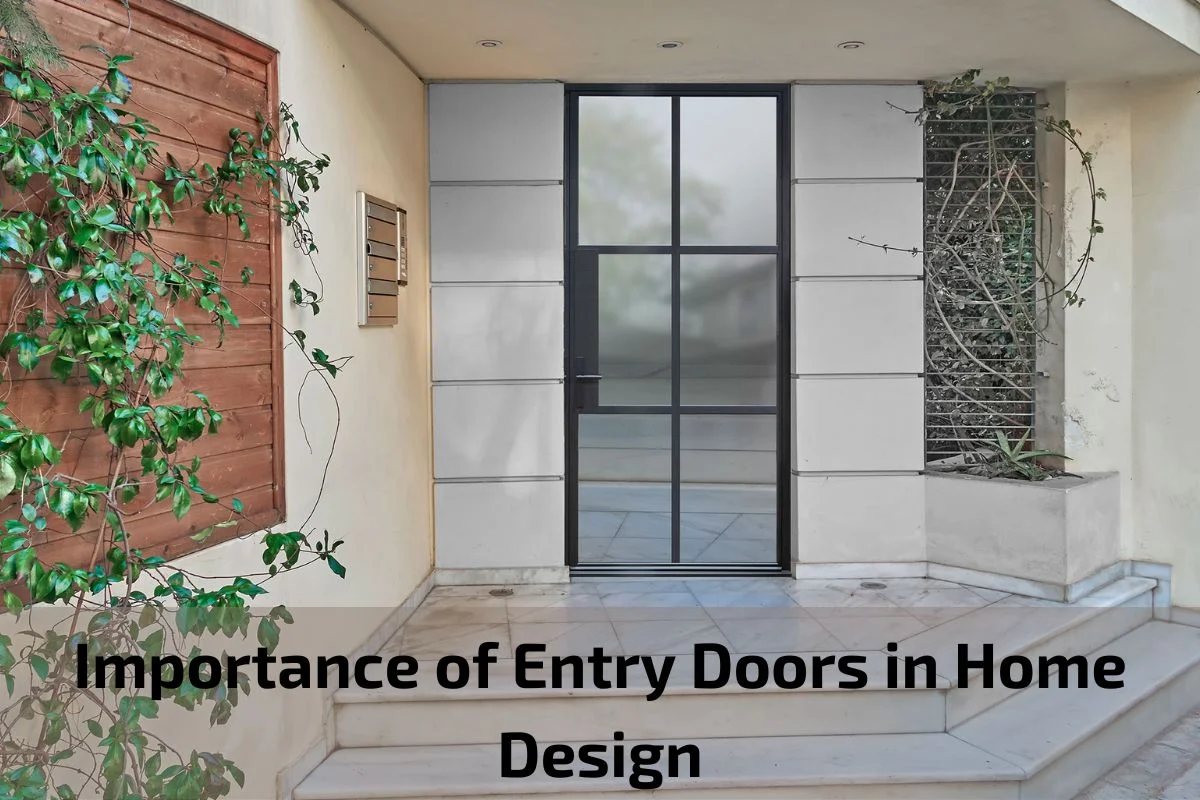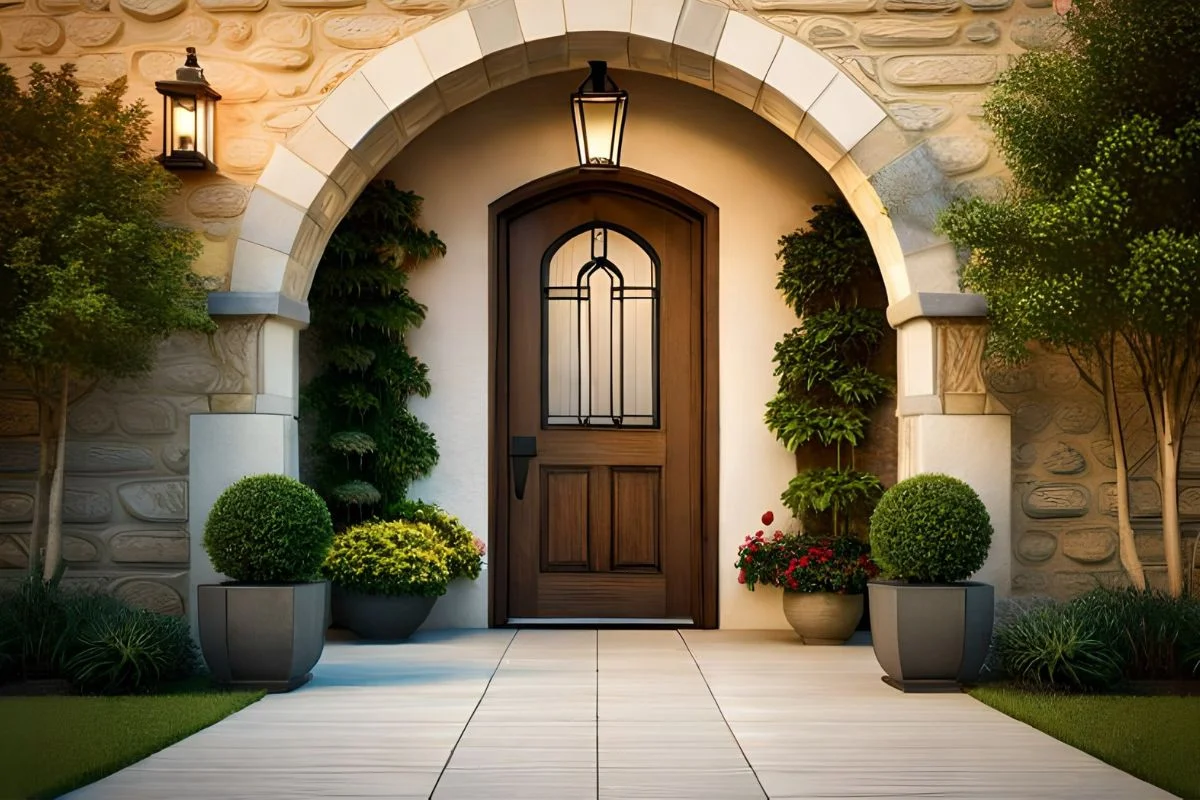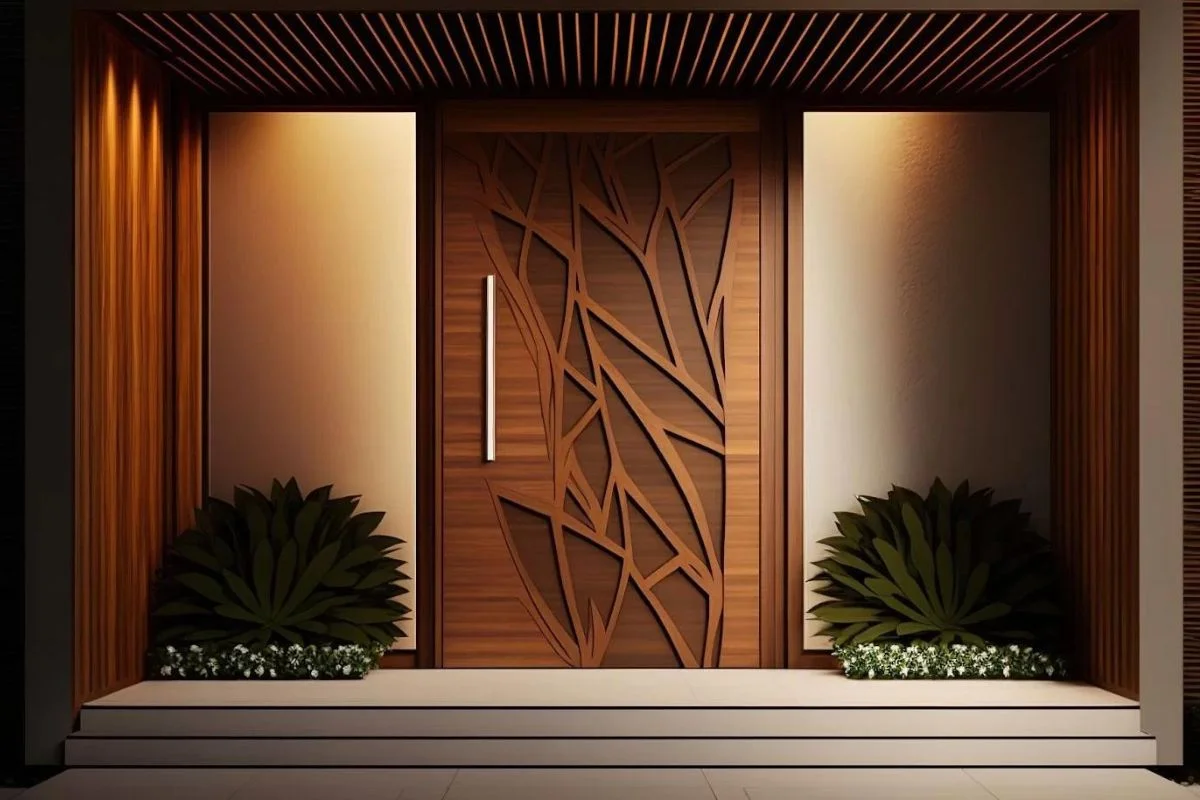
Entry doors serve as the gateway to our homes, welcoming us and our guests while also providing security and insulation. They play a crucial role in home design, not only as functional elements but also as aesthetic focal points that contribute to the overall curb appeal and style of a house.
Beyond their practical functions, entry doors make a statement about the character and personality of a home. They set the tone for what lies beyond, offering a glimpse into the design aesthetic and architectural style of the interior space.
In this article, we will explore the significance of entry doors in home design, examining how they influence the look, feel, and functionality of residential properties. From enhancing curb appeal to providing security and energy efficiency, entry doors are essential components that deserve careful consideration in the design and construction of any home. Let’s delve into the importance of entry doors and discover how they contribute to the overall beauty and functionality of our living spaces.
Importance of Entry Doors in Home Design
Entry doors play a pivotal role in home design, serving as the focal point of the exterior facade while offering functional and aesthetic benefits to homeowners. Here’s why entry doors are of utmost importance in home design:
First Impressions: Entry doors are the first feature that guests and passersby notice when approaching a home. They set the tone for the entire property, creating a lasting impression of the homeowner’s style and taste.
Curb Appeal: An attractive entry door enhances the curb appeal of a home, adding visual interest and charm to the exterior facade. It contributes to the overall aesthetics and character of the property, making it stand out in the neighborhood.
Architectural Harmony: Entry doors are essential elements that tie together the architectural style of a home. Whether it’s a classic colonial, a modern minimalist, or a rustic farmhouse, the design and material of the entry door should complement the overall architectural theme.
Security and Safety: Beyond aesthetics, entry doors provide security and safety for homeowners and their families. High-quality entry doors equipped with sturdy locks and reinforced frames offer peace of mind, deterring potential intruders and protecting the home’s occupants.
Energy Efficiency: Modern entry doors are designed to improve energy efficiency by minimizing heat loss and drafts. Well-insulated entry doors help maintain a comfortable indoor temperature year-round, reducing heating and cooling costs while promoting environmental sustainability.
Natural Light and Ventilation: Entry doors with glass panels or sidelights allow natural light to filter into the home’s interior, creating a bright and inviting ambiance. They also facilitate airflow and ventilation, promoting fresh air circulation throughout the living space.
Personalization: Entry doors offer homeowners an opportunity for personalization and self-expression. With a wide range of styles, finishes, and decorative elements available, homeowners can customize their entry doors to reflect their unique personality and design preferences.
Key Security Features to Look for in Entry Doors
When selecting entry doors for your home, prioritizing security features is essential to safeguard your property and loved ones. Here are key security features to consider when choosing entry doors:
Solid Construction: Opt for entry doors made from sturdy materials such as steel, fiberglass, or solid wood. Solid construction adds durability and resilience, making it more difficult for intruders to breach the door.
Reinforced Frames: Ensure that entry doors are installed with reinforced frames that can withstand forced entry attempts. Reinforced frames prevent door jamming and provide added stability and security.
Deadbolt Locks: Deadbolt locks are an essential security feature for entry doors. Choose high-quality deadbolts with heavy-duty bolts that extend deep into the door frame for maximum strength and resistance against prying or forced entry.
Quality Locksets: Invest in quality locksets with high-security features, such as ANSI Grade 1 or Grade 2 ratings. Look for locksets with anti-pick, anti-drill, and anti-bump mechanisms to deter unauthorized access.
Keyless Entry Systems: Consider installing keyless entry systems for added convenience and security. Keyless entry systems utilize codes, fingerprint scanners, or smartphone apps to unlock the door, eliminating the need for traditional keys that can be lost or stolen.
Peephole or Door Viewer: Install a peephole or door viewer on entry doors to allow occupants to see who is outside before opening the door. Peepholes provide visual confirmation of visitors’ identities, enhancing safety and security.
Security Cameras and Intercoms: Integrate security cameras and intercom systems with entry doors to monitor and communicate with visitors remotely. These devices provide real-time surveillance and enable homeowners to verify visitors’ identities from the safety of indoors.
Impact Resistance: Choose entry doors with impact-resistant features that can withstand harsh weather conditions, attempted break-ins, and forced entry attempts. Impact-resistant doors offer enhanced security and durability, minimizing the risk of damage or intrusion.
Tamper-Proof Hinges: Install tamper-proof hinges on entry doors to prevent intruders from removing the door from its frame. Tamper-proof hinges feature hidden or non-removable pins that deter tampering and forced entry.
Pros and Cons of Different Entry Door Materials
Choosing the right material for your entry door is crucial, as it impacts not only the aesthetics but also the durability, security, and maintenance requirements of your home. Here are the pros and cons of different entry door materials:
Wood Doors:
Pros:
- Classic and timeless appearance, with natural warmth and beauty.
- Can be easily customized and stained or painted to match your home’s style.
- Excellent insulation properties, providing energy efficiency and soundproofing.
Cons:
- Susceptible to warping, rotting, and decay if not properly maintained.
- Require regular maintenance, including sealing and refinishing, to protect against moisture and UV damage.
- Higher initial cost compared to other materials.
Fiberglass Doors:
Pros:
- Durable and low-maintenance, resistant to warping, rotting, and denting.
- Excellent insulation properties, helping to improve energy efficiency and reduce heating and cooling costs.
- Available in a wide range of styles and finishes, including wood grain textures that mimic the look of real wood.
Cons:
- Limited customization options compared to wood doors.
- Can be more expensive than steel doors, especially for high-end fiberglass models.
- Susceptible to fading and discoloration over time if exposed to direct sunlight.
Steel Doors:
Pros:
- Strong and durable, providing excellent security and protection against forced entry.
- Low-maintenance and resistant to warping, cracking, and rotting.
- Cost-effective option compared to wood and fiberglass doors.
Cons:
- Prone to denting and scratching, especially in high-traffic areas.
- Limited insulation properties compared to wood and fiberglass doors.
- Susceptible to rust and corrosion if not properly maintained, particularly in coastal or humid environments.
Composite Doors:
Pros:
- Combination of wood, fiberglass, and other materials for enhanced durability and performance.
- Low-maintenance and resistant to warping, cracking, and rotting.
- Excellent insulation properties and energy efficiency.
Cons:
- Limited availability and higher initial cost compared to other materials.
- May not offer the same aesthetic appeal as traditional wood doors.
- Quality and performance can vary depending on the manufacturer and materials used.
Maintenance and Care for Entry Doors
Proper maintenance and care are essential for preserving the beauty, functionality, and longevity of your entry doors. Here are some important maintenance tips to keep your entry doors in optimal condition:
Regular Cleaning: Wipe down your entry doors periodically with a mild detergent and water solution to remove dirt, dust, and grime. Avoid using abrasive cleaners or harsh chemicals that may damage the finish or surface of the door.
Inspect and Repair: Routinely inspect your entry doors for signs of wear, damage, or weathering. Check for cracks, warping, peeling paint, or loose hardware, and promptly address any issues to prevent further damage or deterioration.
Lubricate Hardware: Lubricate hinges, locks, and other hardware components regularly to ensure smooth operation and prevent rust or corrosion. Use a silicone-based lubricant or graphite powder to lubricate moving parts and mechanisms.
Seal and Weather-strip: Check the weather-stripping and sealant around your entry doors for gaps, leaks, or deterioration. Replace worn weather-stripping and reapply sealant as needed to maintain a tight seal and prevent drafts, moisture intrusion, and energy loss.
Protect Against Moisture: Protect wooden entry doors from moisture damage by applying a protective finish or sealant. Ensure that the finish is applied to all exposed surfaces, including the top and bottom edges, to prevent warping, swelling, and rotting.
Trim Vegetation: Trim vegetation and foliage around your entry doors to prevent branches, leaves, and debris from scratching or damaging the door surface. Trim back shrubs, bushes, and trees to maintain a clear pathway and prevent obstruction.
Monitor Exterior Conditions: Pay attention to external factors such as extreme weather conditions, humidity levels, and environmental elements that may affect the condition of your entry doors. Take proactive measures to protect your doors during severe weather events or adverse conditions.
Secure Hardware: Ensure that door hardware, including locks, handles, and deadbolts, is securely fastened and functioning properly. Tighten loose screws and bolts, and replace worn or damaged hardware as needed to maintain security and stability.
Professional Inspection: Schedule periodic inspections and maintenance checks by a qualified door technician or contractor to assess the condition of your entry doors and address any underlying issues or concerns.
Conclusion
In conclusion, entry doors are not only functional elements but also integral components of home design, security, and curb appeal. From welcoming guests to protecting your home from intruders and the elements, entry doors serve multiple purposes that make them indispensable features of any residence.


